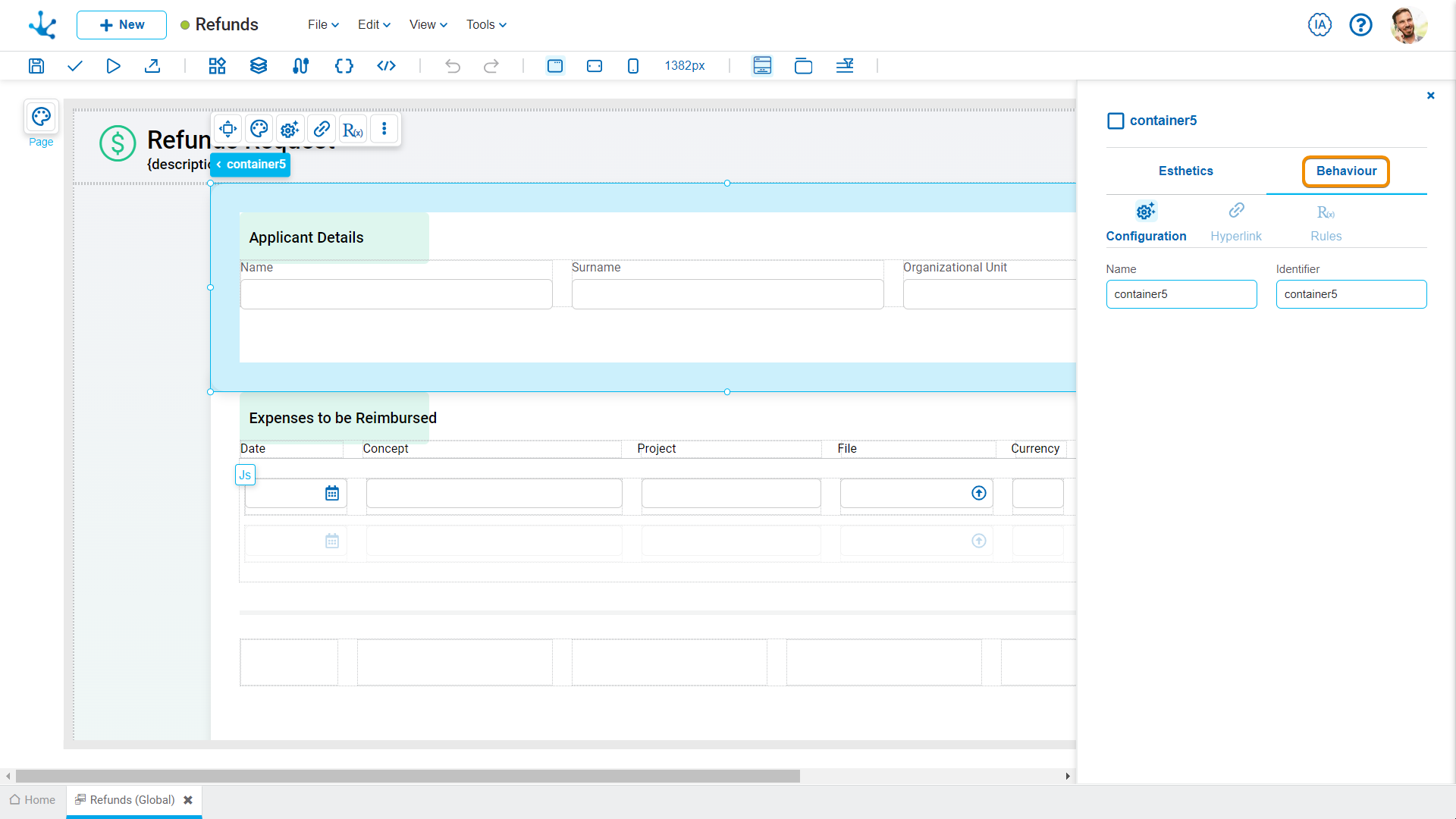Container
Container boxes are used to create an adaptive and structured layout for the entity. The elements are dragged into the container and then styled for different breakpoints. The elements automatically attach to the container to resize in direct relation to it.
The entity modeler also includes other structural elements that facilitate field modeling, improving the time it takes to model an entity without worrying about the aesthetic aspects of the fields. All aesthetic aspects of these elements are defined by default to adapt to the different breakpoints.
The element properties are represented by icons in its context menu, where its operations are also available.
Subtypes
When selecting the option "Container" from the icon ![]() in the top toolbar, a list opens with the different subtypes of this element, which can be dragged and dropped into the modeling area. Each subtype has the element's properties modeled and built in a specific way.
in the top toolbar, a list opens with the different subtypes of this element, which can be dragged and dropped into the modeling area. Each subtype has the element's properties modeled and built in a specific way.
•Simple
•Background Color
•Border
•Shadow
•Collapsible
•Repetitive Field Group
•Collapsible Repetitive Card Group
•Collapsible Repetitive Tape Group
Simple
It allows modeling a simple-style container. The content can be any element.
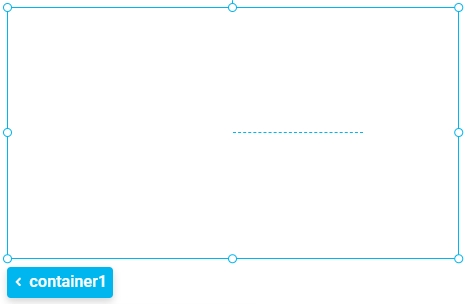
Background Color
It allows modeling a container with a preset background color, which can be modified. The content can be any element.
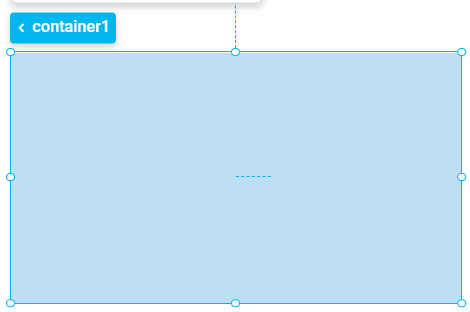
Border
It allows modeling a container with a preset background color and a border, which can be modified. The content can be any element.
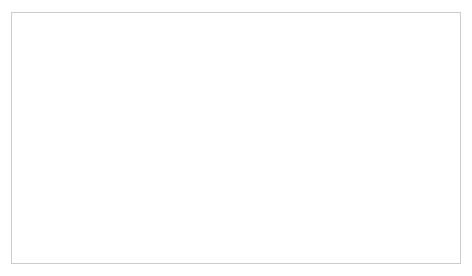
Shadow
It allows modeling a container with a preset background color, a border, and a shadow, which can be modified. The content can be any element.
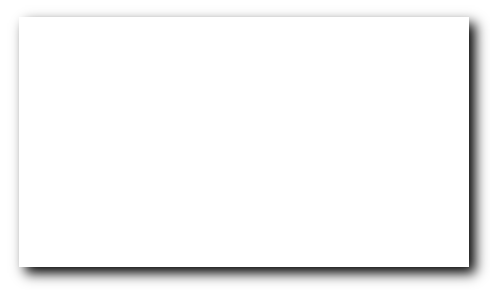
It allows grouping fields and offer drop-down behavior. This means that its content can be easily expanded or closed, by clicking on the corresponding icon,  or
or  , depending on the state of the container.
, depending on the state of the container.
This container not only groups fields, but can also contain any other element, providing great flexibility in design.
The collapsible container is primarily used within design elements, to visually organize entities with a large number of fields. By expanding or collapsing the container, information can be viewed in a more organized manner, making it easier to navigate through data groups.
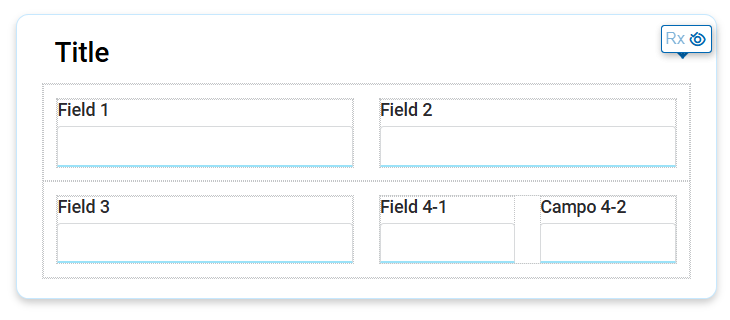
It allows organizing repetitive field structures in a grid format, with descriptions for each field and headers for columns. Additionally, being a repetitive structure, it includes the facility to add and delete rows within the grid.
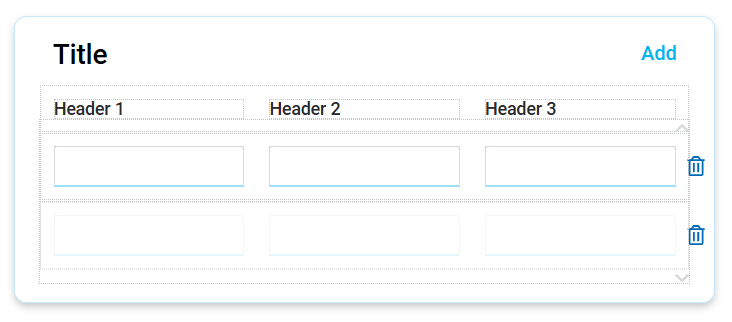
Collapsible Repetitive Card Group
It allows organizing repetitive field structures in a grid format, with descriptions for each field and headers for the columns. Additionally, being a repetitive structure, it includes the facility to add and delete rows within the grid.
This container has a fixed size, and items are scrolled page by page within the repeater, using the icons ![]() and
and ![]() . In the repeater configuration properties panel, it is modeled as subtype "card" and the number of rows to paginate.
. In the repeater configuration properties panel, it is modeled as subtype "card" and the number of rows to paginate.
The collapsible repetitive tape group is ideal for saving multiple instances of the same type of information while making it easier to display entities with many fields.
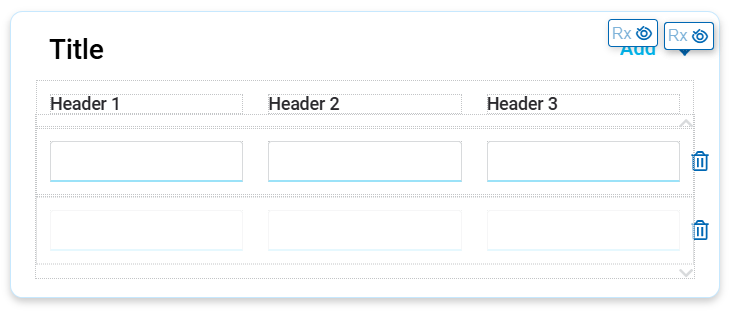
Collapsible Repetitive Tape Group
It allows organizing repetitive field structures in a grid format, with descriptions for each field and headers for the columns. Additionally, being a repetitive structure, it includes the facility to add and delete rows within the grid.
This container expands indefinitely as new items are added, offering greater flexibility. In the repeater configuration properties panel, it is modeled as “tape” subtype.
The collapsible repetitive tape group is ideal for saving multiple instances of the same type of information while making it easier to display entities with many fields.

Classification of Properties
Properties are divided into two groups: esthetic properties and behavior properties.
Esthetic Properties
In the esthetic properties panel, the following are grouped:
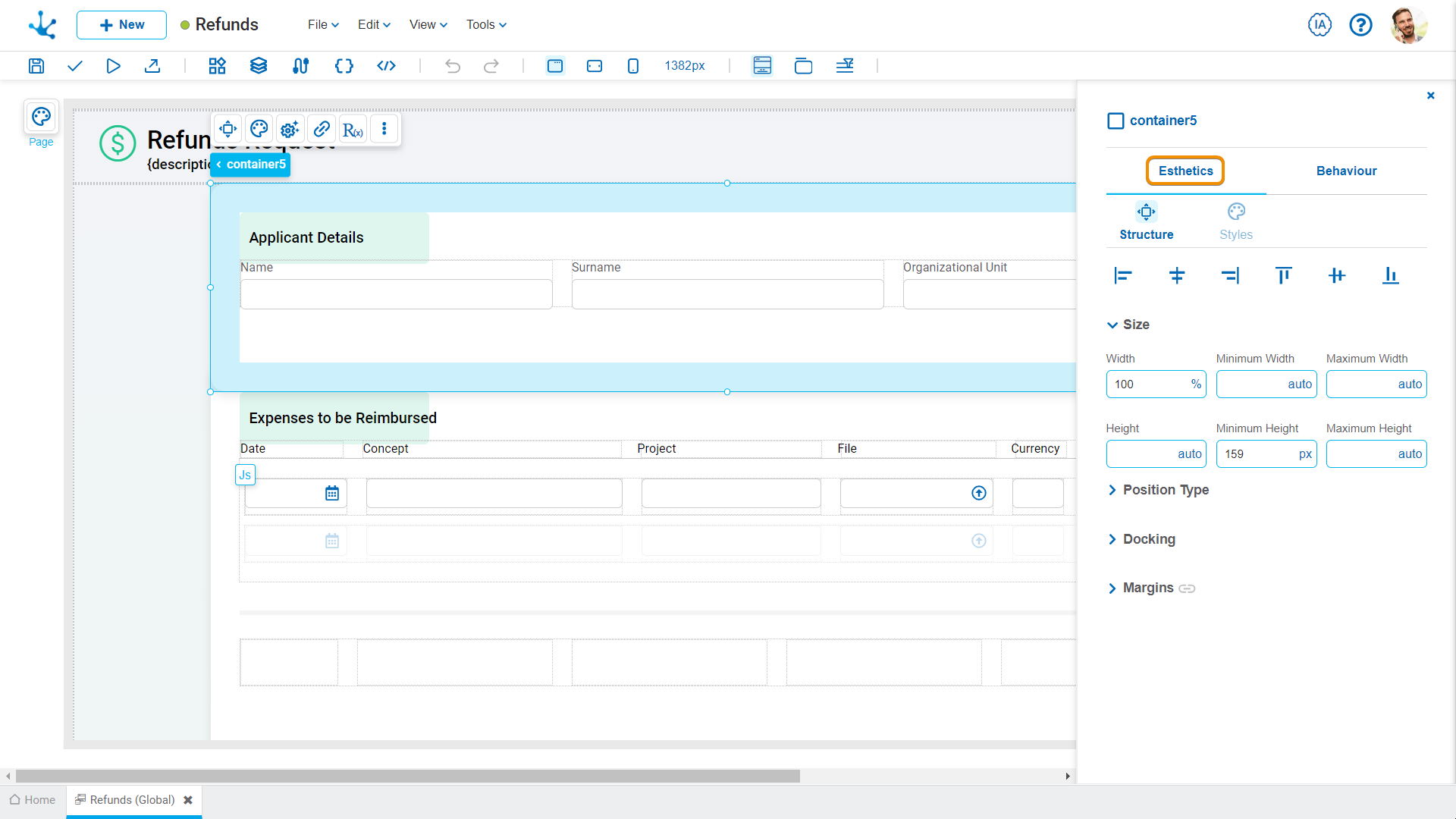
Behavior Properties
In the behavior properties panel, the following are grouped:
